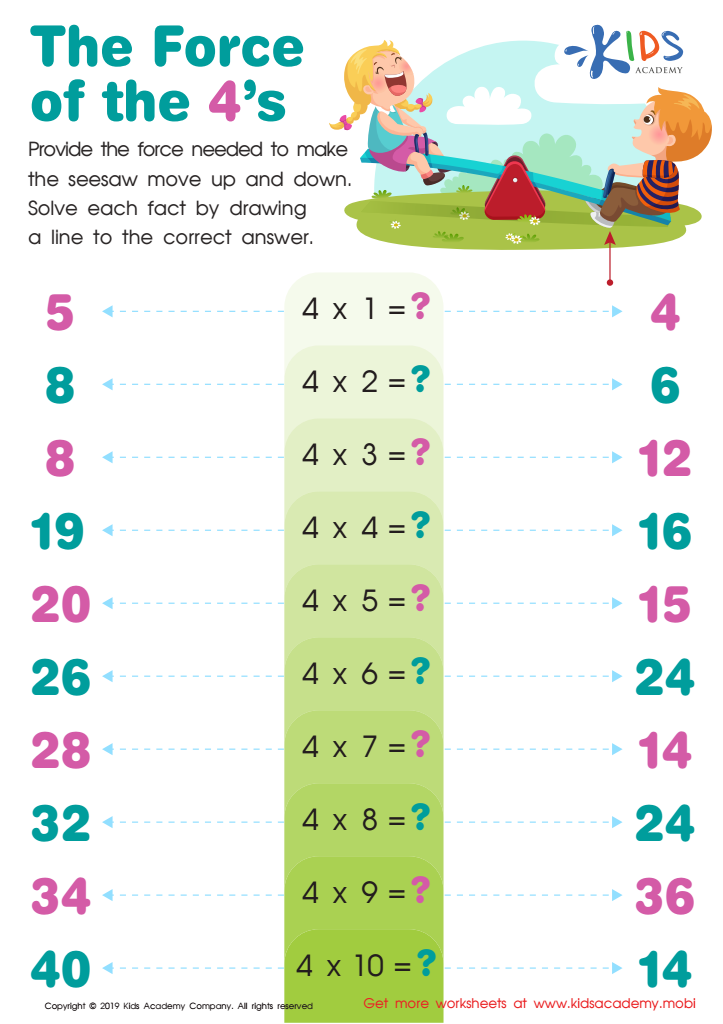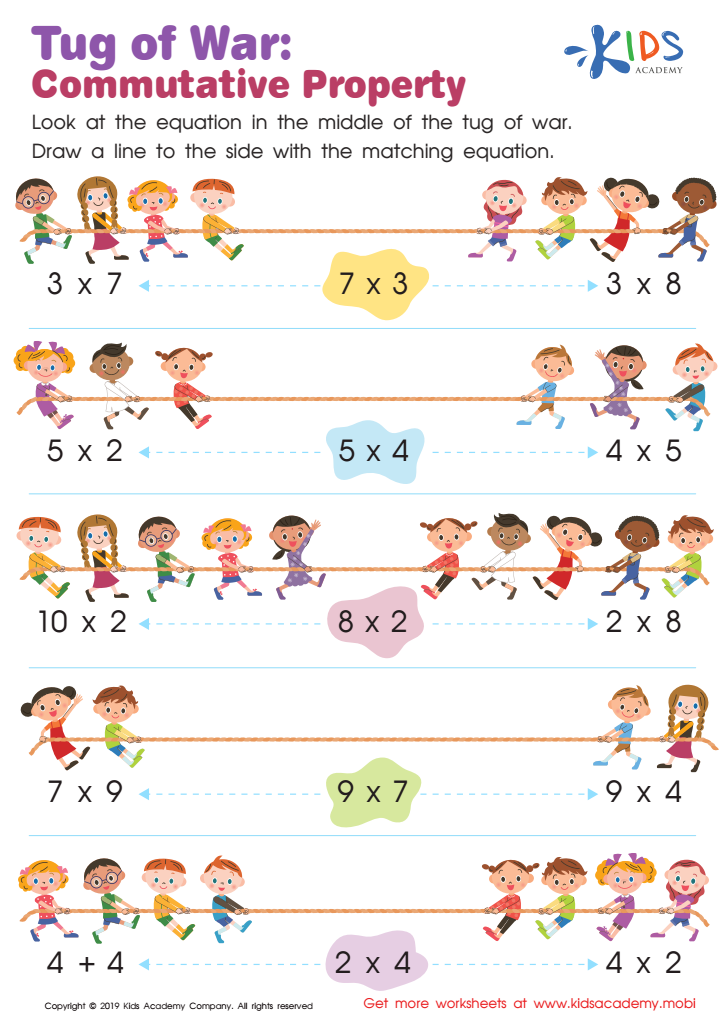Sorting worksheets activities for 8-Year-Olds
2 filtered results
-
From - To


The Force of the 4's Worksheet


Tug of War: Commutative Property Worksheet
Sorting worksheets activities are a fundamental tool in both classroom and home learning environments, offering a plethora of benefits aimed at enhancing a child's cognitive and analytical skills. These activities are meticulously designed to introduce and reinforce the concept of sorting - a critical early math skill that lays the groundwork for understanding more complex mathematical concepts such as sets, patterns, and numbers.
One of the primary advantages of sorting worksheets activities is their ability to improve critical thinking skills. Children learn to categorize items based on specific attributes such as color, size, shape, or type, which in turn, hones their ability to analyze similarities and differences. This analytical process is crucial, not just in math but in everyday problem-solving situations.
Moreover, sorting worksheets activities are incredibly versatile, capable of adapting to various learning styles and subject matters. Whether it's sorting animals based on their habitats, classifying geometric shapes, or organizing objects by size, these activities keep children engaged and motivated. The tactile and visual aspects of sorting help to maintain the interest of visual and kinesthetic learners, making learning an enjoyable process.
Additionally, these activities encourage the development of fine motor skills, especially in younger children. Picking up, moving, and placing objects in their respective categories refine motor control and hand-eye coordination, essential skills for writing and other academic tasks.
Sorting worksheets activities also pave the way for understanding more advanced mathematical concepts such as ordering, sequencing, and sets. By mastering sorting, children build a solid foundation that aids in their comprehension of these topics as they progress in their educational journey.
In conclusion, sorting worksheets activities are invaluable in the educational development of children. They foster critical thinking, improve analytical skills, cater to various learning styles, and prepare children for future mathematical challenges. These activities are not just beneficial but essential for a well-rounded learning experience.
 Assign to the classroom
Assign to the classroom












